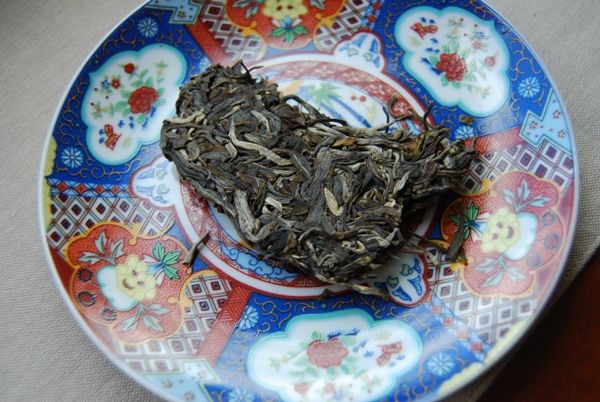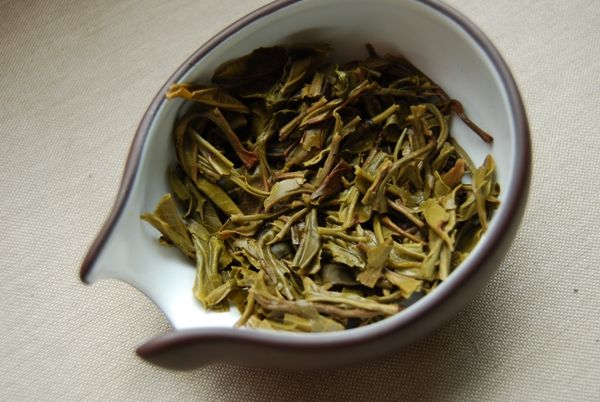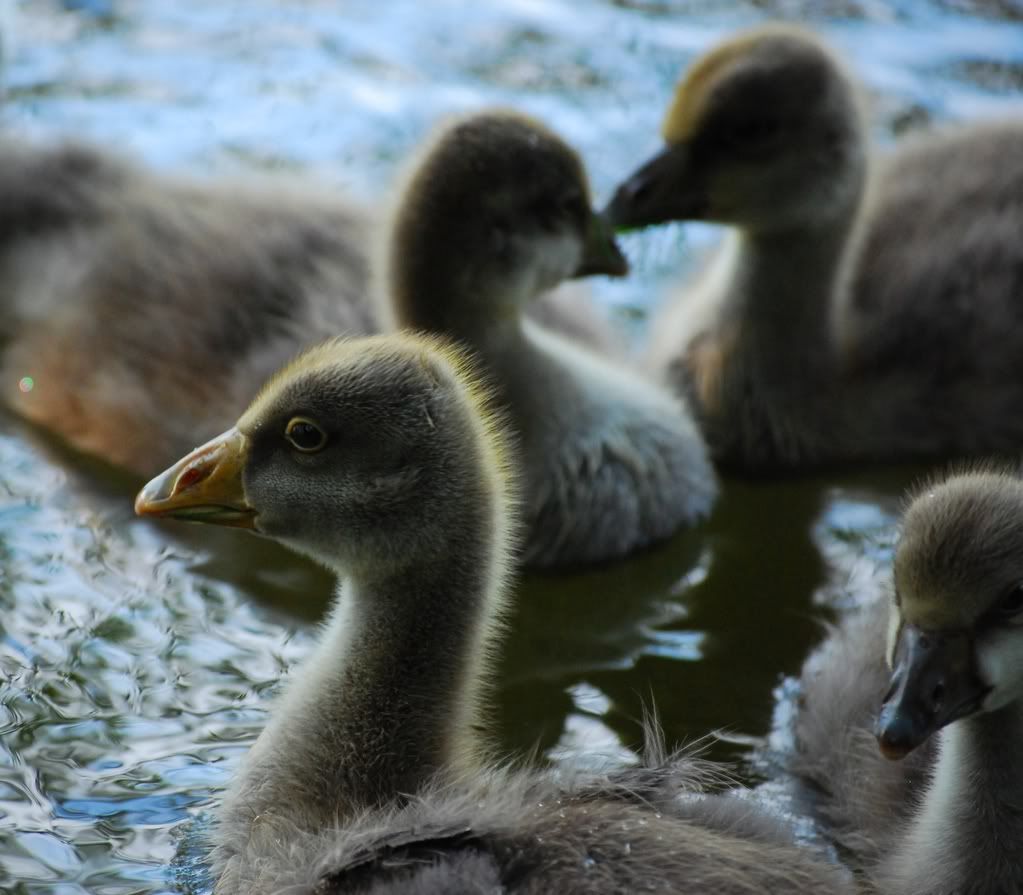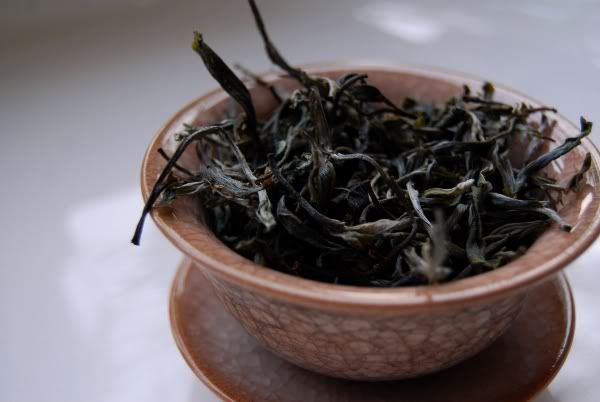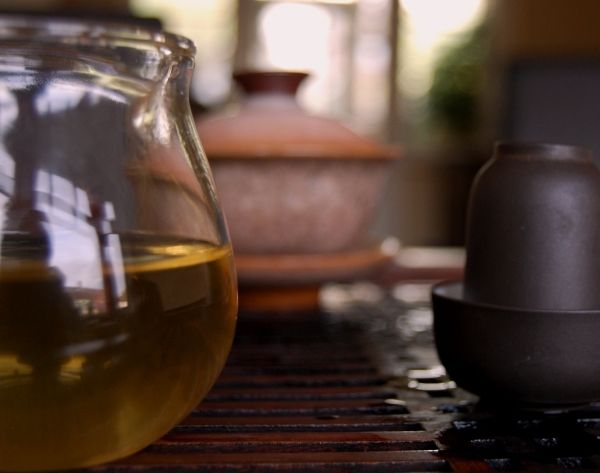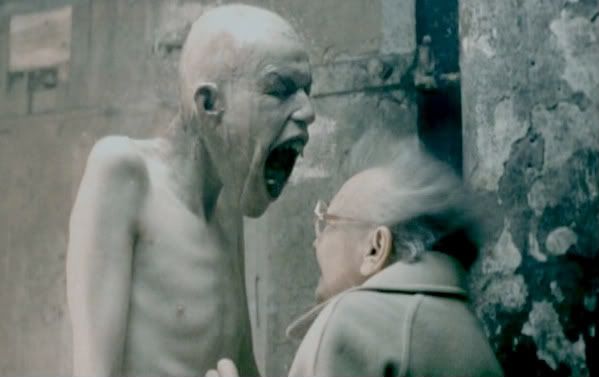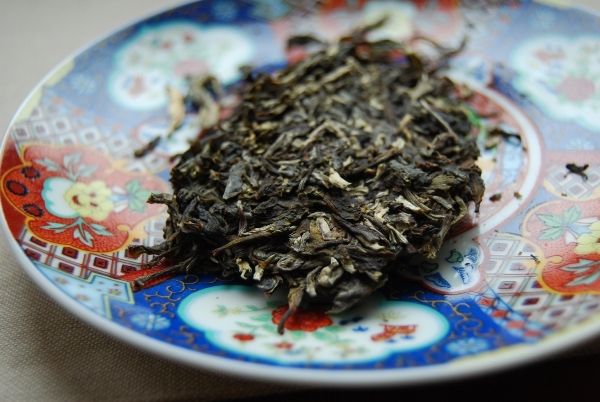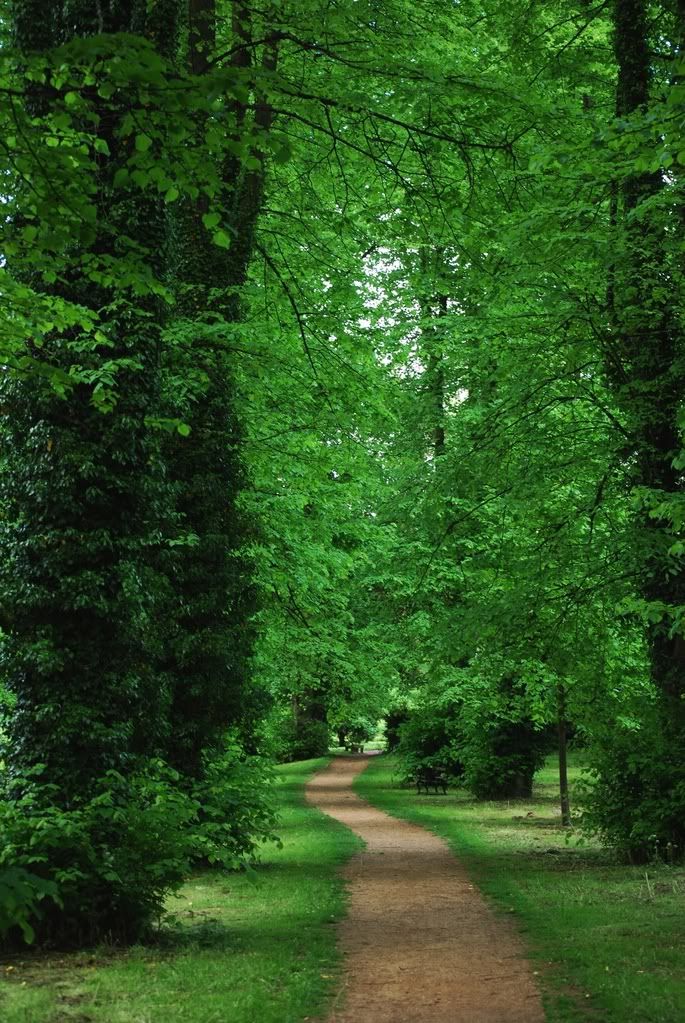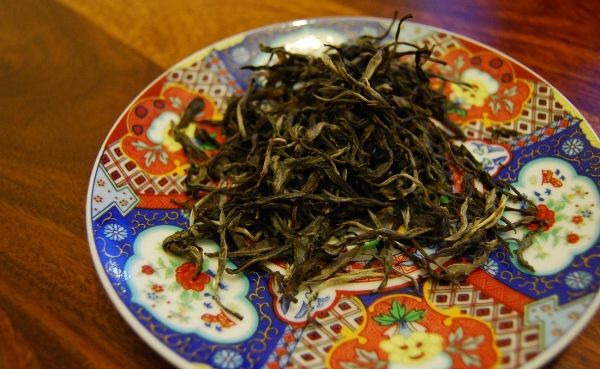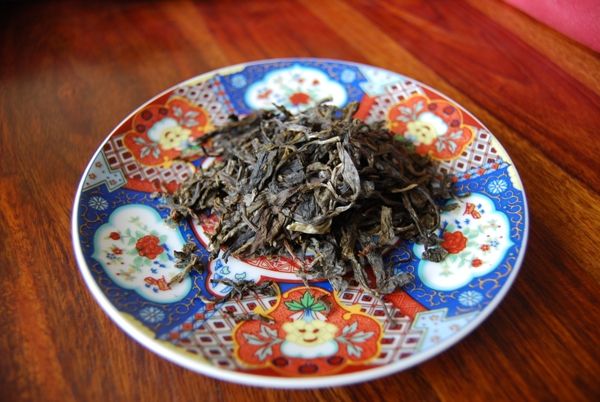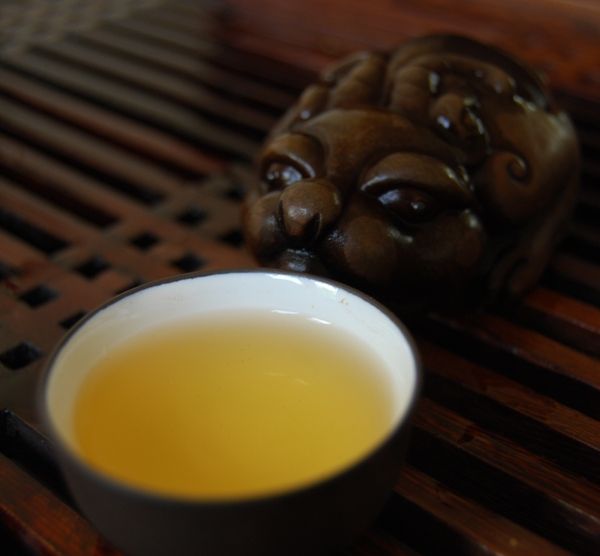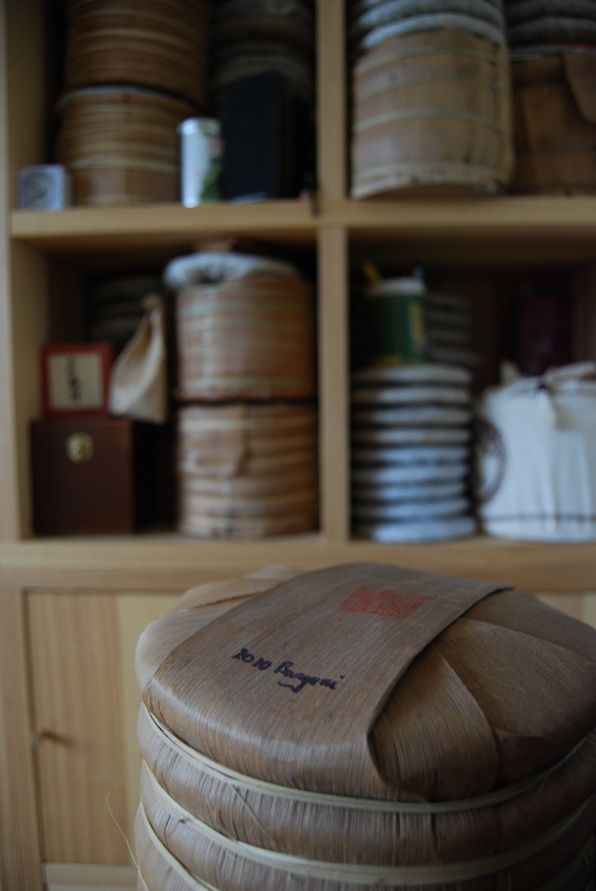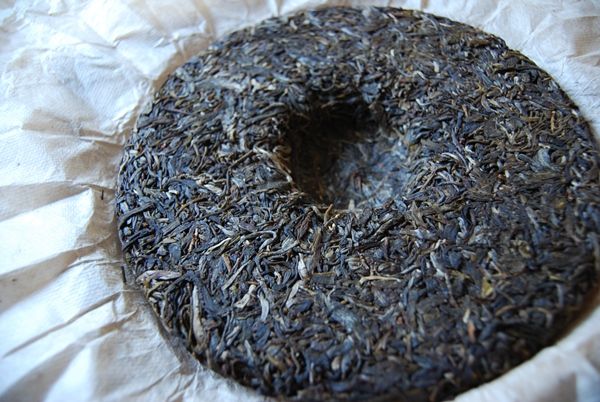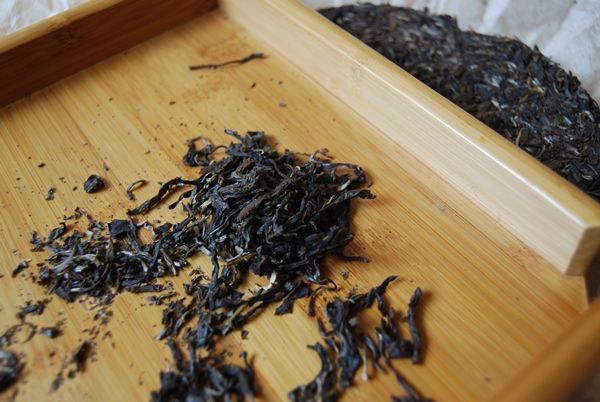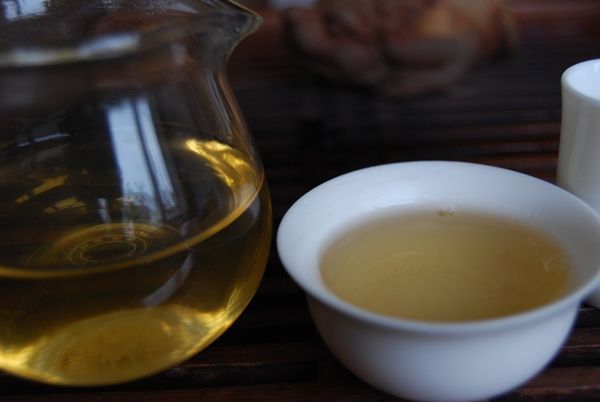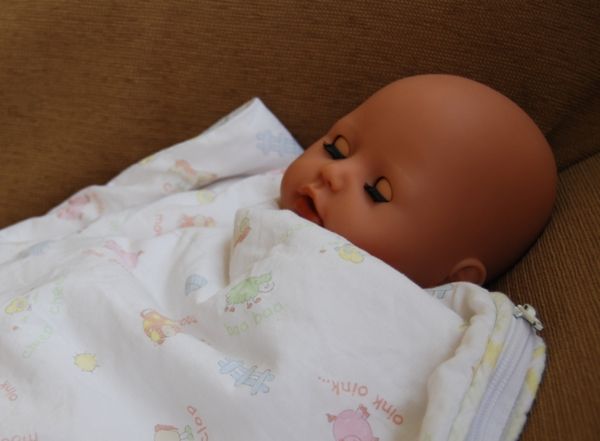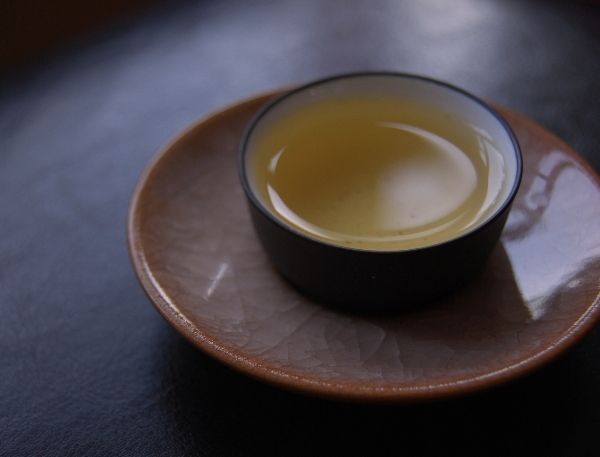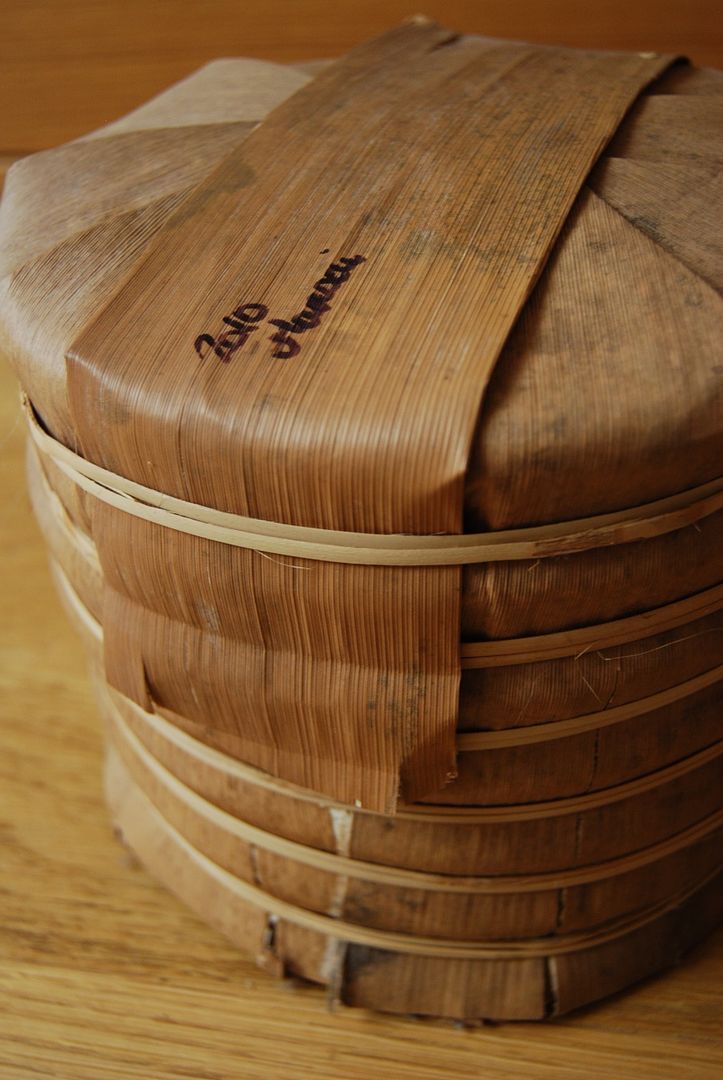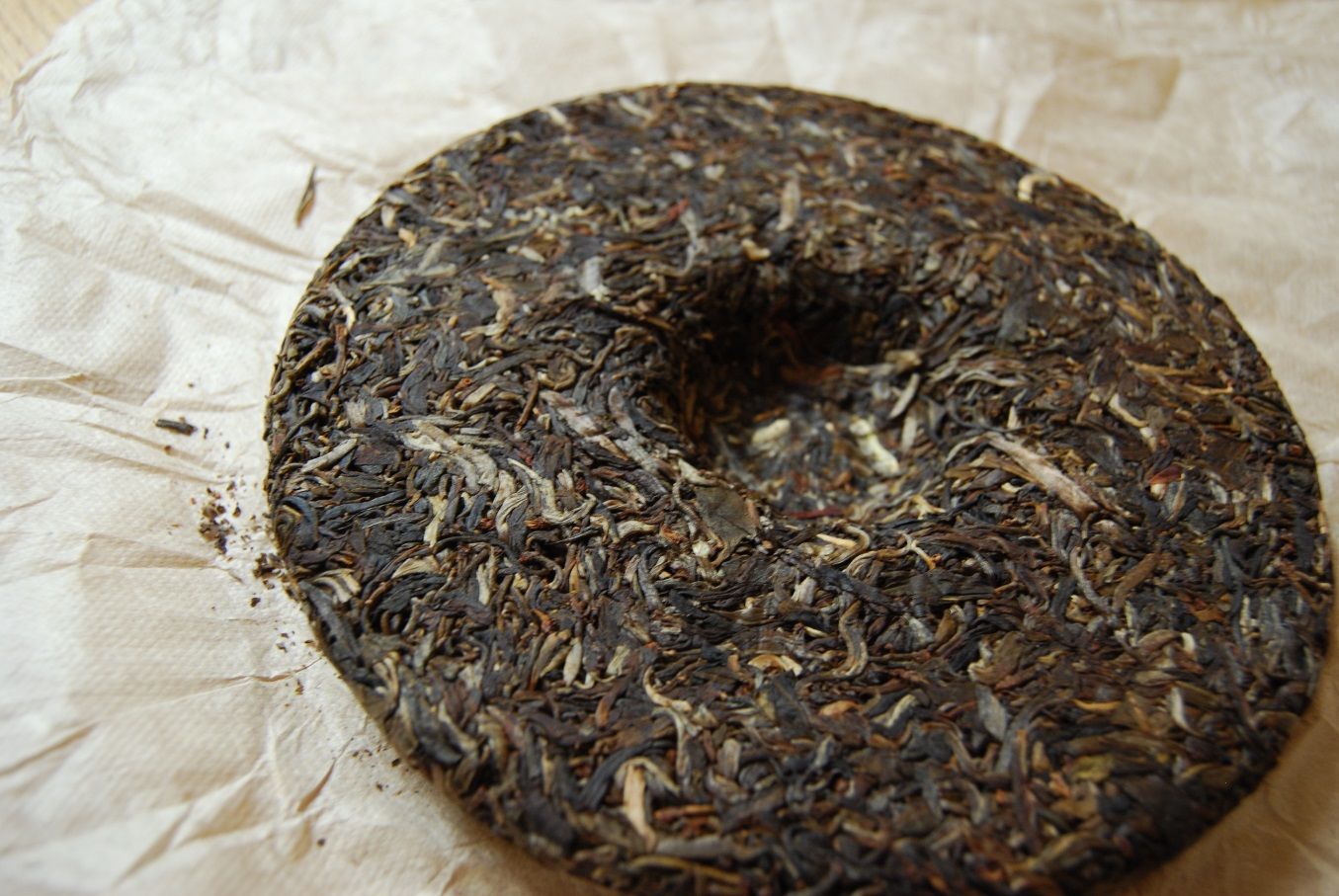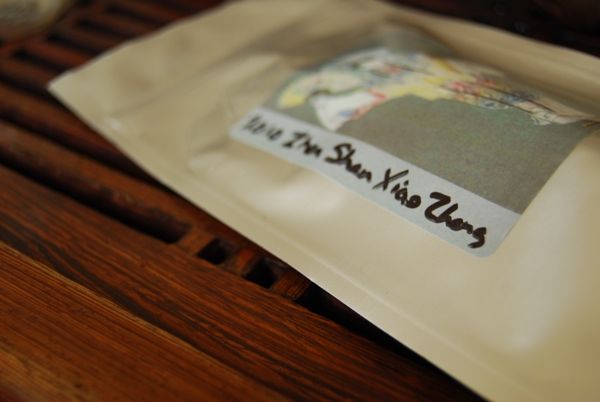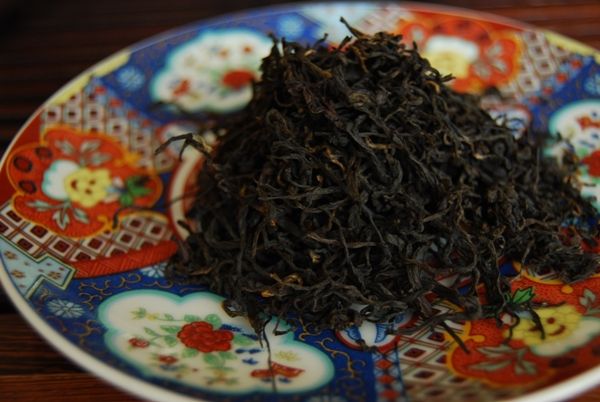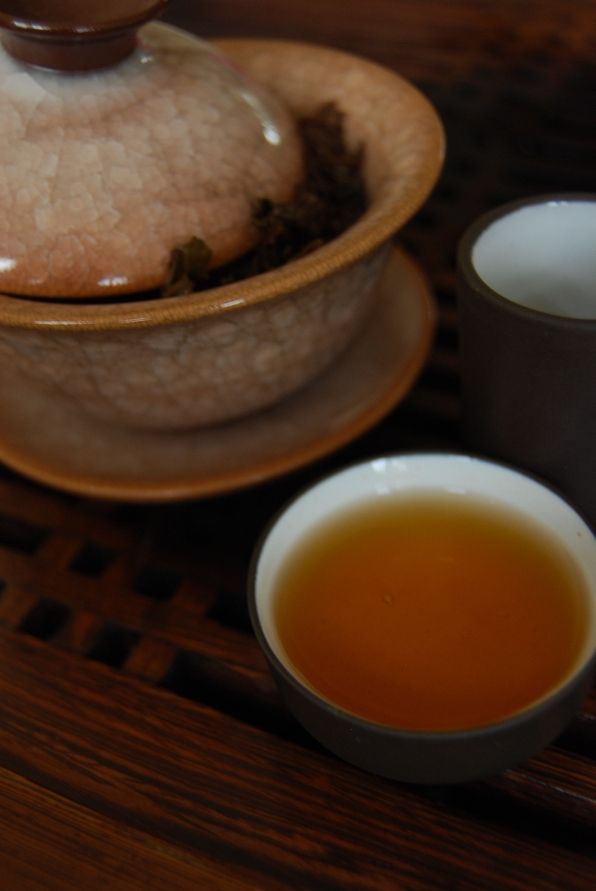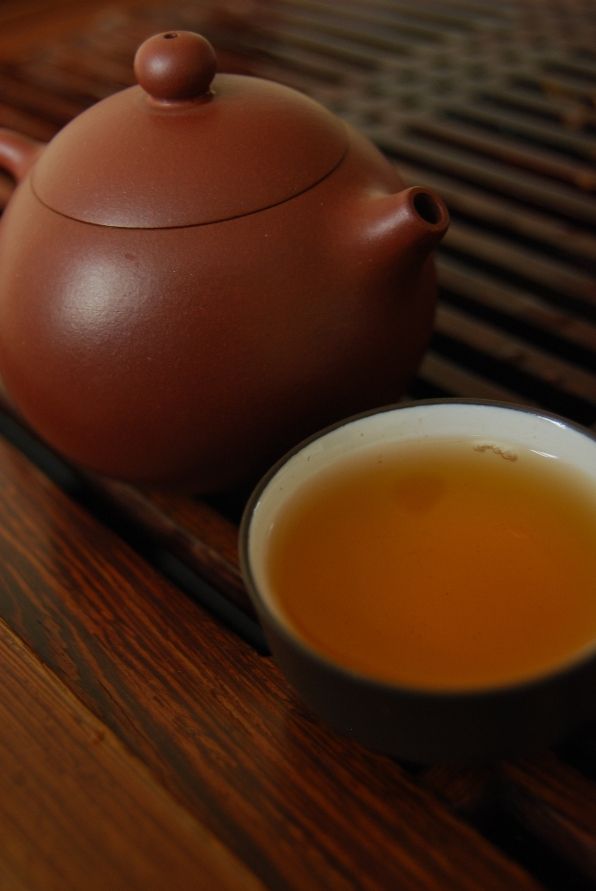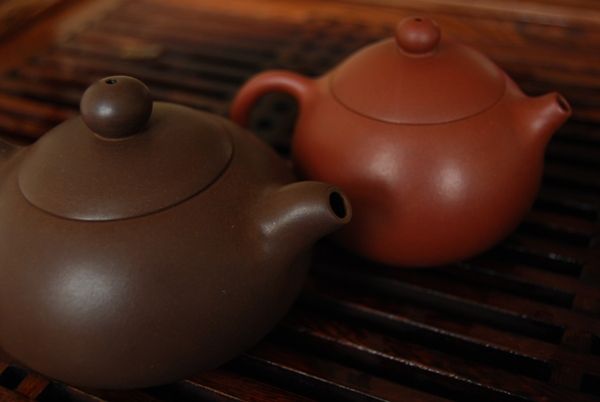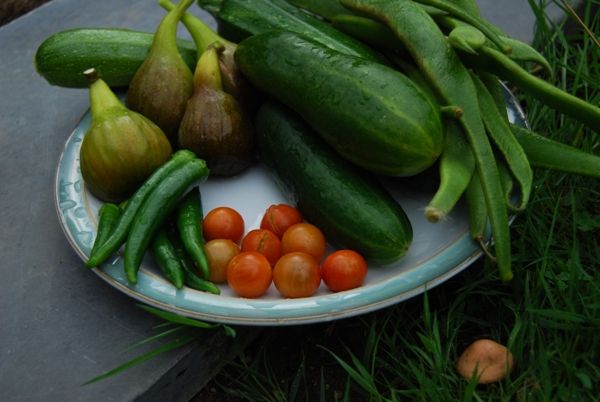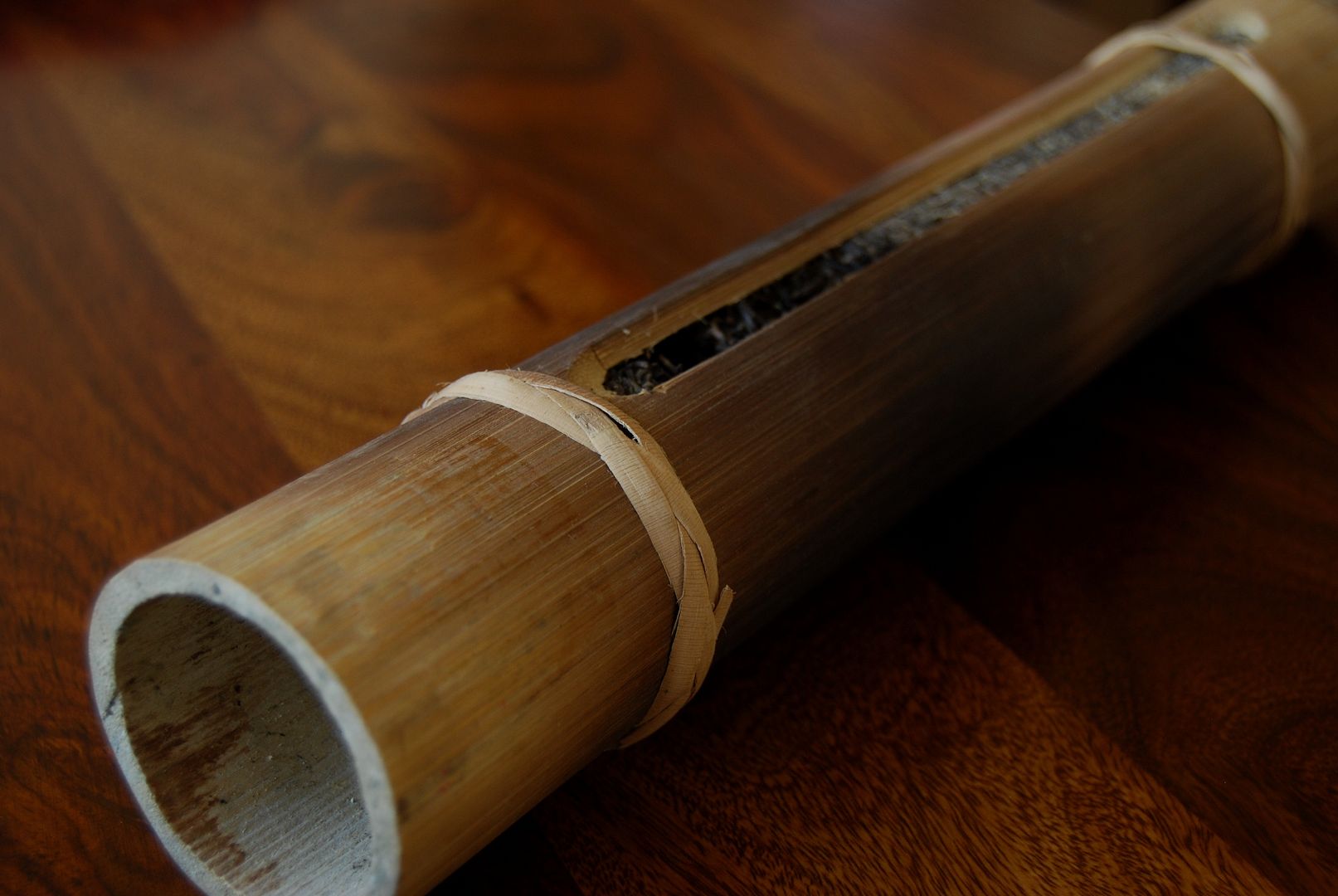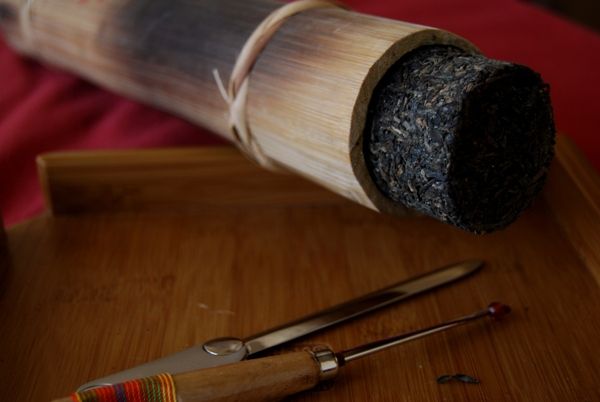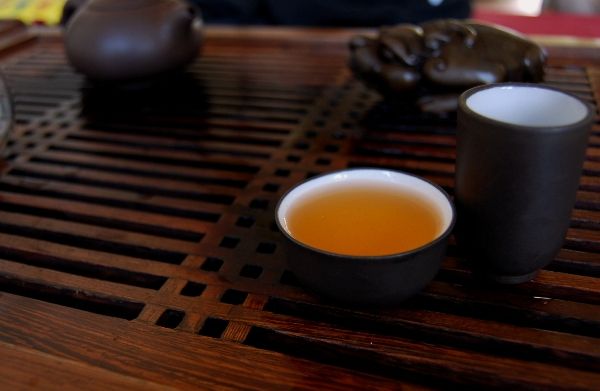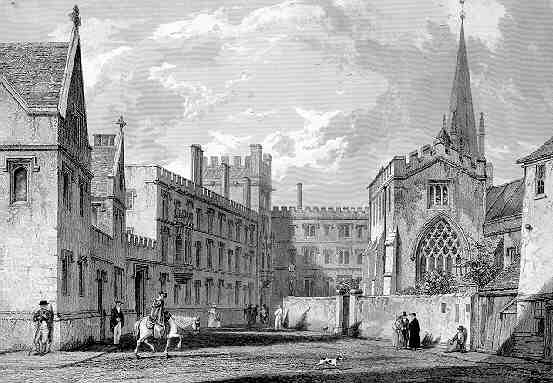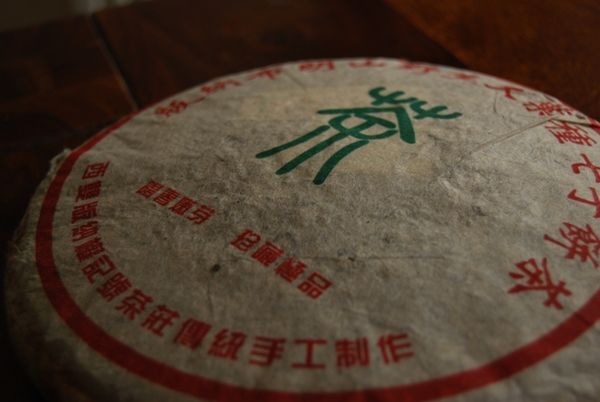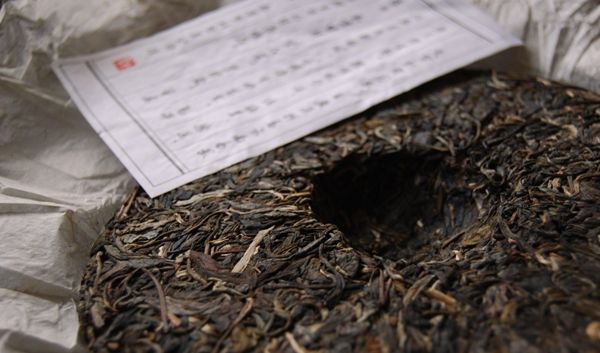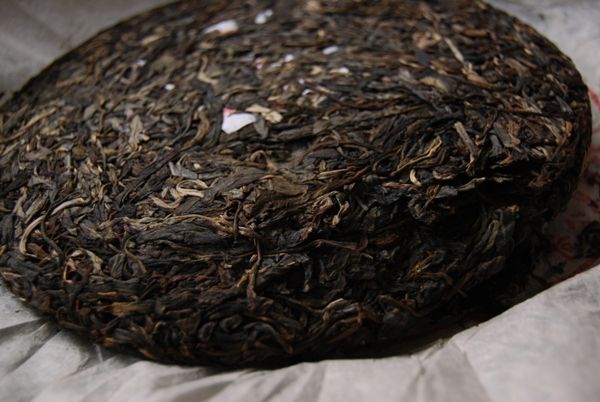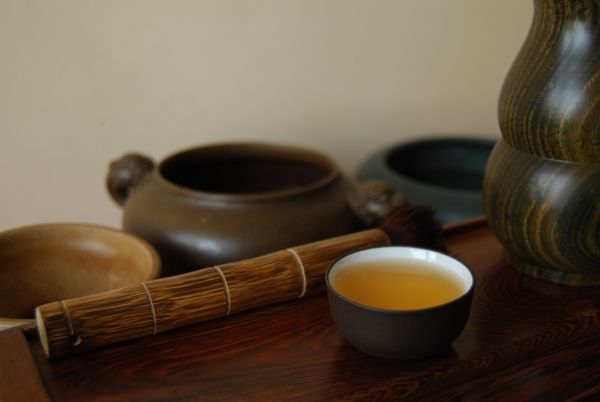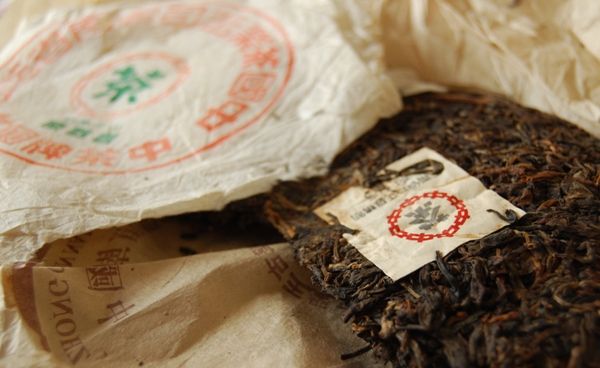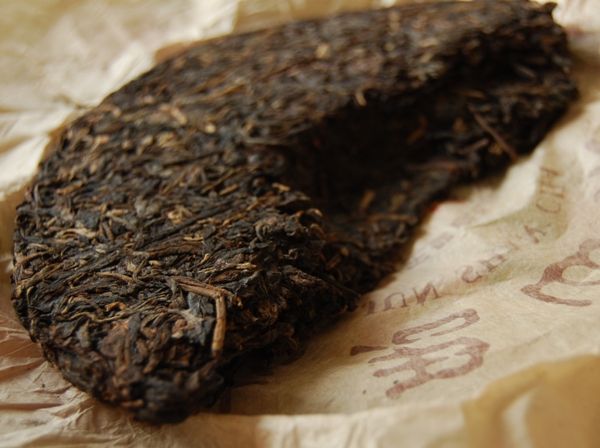We've been undergoing antenatal classes, recently, in preparation for our new arrival. Childbirth and childcare are alien fields to me, so any information is soaked up like a dry sponge. Our antenatal nurse left a life-size, actual-weight infant doll in our house for us to practice changing nappies and so on. I found myself reading my weekly periodicals with Proto-George on my knee.
The proprietors of
Essence of Tea have also been hard at work, this year, working on their own range of cakes. They range between decent to excellent, and I thought I'd open the batting with what I believe to be the best deal from this year's range - the "Mansai".
The story of the tea is amusing: Nada seemingly had to cross a rope bridge to get to the village where this tea was made, in the disputed territories between Myanmar and the PRC, at the foot of the Bulang range of mountains.
Adventurous procurement aside, the tea itself, like most hand-made cakes from vendors, is very pretty. The leaves, pictured above, are dark, fruity, and sweet. We have some stems, and some broken leaves (seemingly from the aforementioned journey that these leaves took to reach the outside world).
I originally tried this tea as a maocha, and it was immensely smokey. The bingcha version, happily, has seen that smokiness dissipate, making this one of two of Nada's teas from this year that I really love.
I'm not really one for nancified, feminine, delicate teas. I can't see them managing to stay the course of years, with their effete, louche, elegance. I'm on the hunt for beefy, chunky, fat, chubby, sweaty, calorific, overweight, aggressively obnoxious teas. It seems that my tastes differ from Nada's in this respect, because the majority of his products seem to be of the former variety. Hence, this cake was something of a pleasure.
This Mansai is active from the start, containing a big, buttery scent and flavour. The huge energy and cooling characteristics are testament to the excellent quality of it contents. I detected a hint of dry-roasting from the wok, which Nada conceded.
It is a gripping, buttery-sweet monster, with a pure, monolithic kuwei [bitterness], and a similar huigan. It is dry, like a good white wine, but also cereal-like, as with Lincang and other "outlier" teas.
This is one of three Nadacha cakes of which I bought a tong, this year. At £25, I think it's the best value of the batch, in terms of what you get for your money. The quality is not really up for debate.
Addendum
April, 2014
Looking at the first photograph in the above provokes hearty chuckles: the baby that we were expecting back then is now 3.5 years old and bossing his poor father around. Has the 2010 Mansai aged in a similarly effective manner?
It took me a while to find, but that is because I did not notice that the tong is entirely unopened - I was looking for paper-wrapped cakes, when I should have been searching in my bamboo zones. It seems that I bought this tong (for a little under £25 per cake!) based on the sample alone, and have not tried any of the actual cakes.
Therefore, it is time to crank up the chiptunes and see what the Mansai has to offer. A quick check of the cake suggests that all seems well:
The maocha looks as if it is no longer new: there is a darker, browner hue to the leaves that suggests they have seem some humidity. The scent is sweet. So far, so good.

If the original cake was yellow, this is more towards orange (as pictured below). The scent in the wenxiangbei [aroma cup] is straightforward sweetness, with a decent lengxiang [cooling scent] that suggests the tea has some "finish"; i.e., contents that might dwell in the throat.
This is confirmed by the characteristics in the mouth: the sweetness remains, the kuwei has settled into a solid, back-end throatiness, and the texture is robust. I can see why I chose this cake: it has the trousers that led me to imagine that it would not fade away with age, and it has a decent base on which "aged" characteristics might build. This turns out to be not too far from the actual state of the tea after four years: it has become low, dense, heavy, and sweet in a most complimentary manner, while retaining trousers sufficient for further aging.

The price. Oh, the price! What can you get for a mere £25 these days? Some ropey, grim plantation tea from a no-name factory? What shocking bargaination occurred back then, in 2010, in days when Essence of Tea's prices were perhaps 20% of their current level - indeed, this was a time in which they were probably over-generous (i.e., too low for the quality). It is no coincidence that the majority of the tong in my collection were bought before 2011.
I am pleased with how this cake has come on within four years; perhaps a direct comparison to the
2011 Mansai might be sensible. Thanks again to NorberT and Tofu Miso for the suggestion of trying this cake again.
Addendum
July, 2016
This cake is surprisingly good: it is sweet, like dried apricots, and humid. I enjoy its complexity, and its continued strength.

